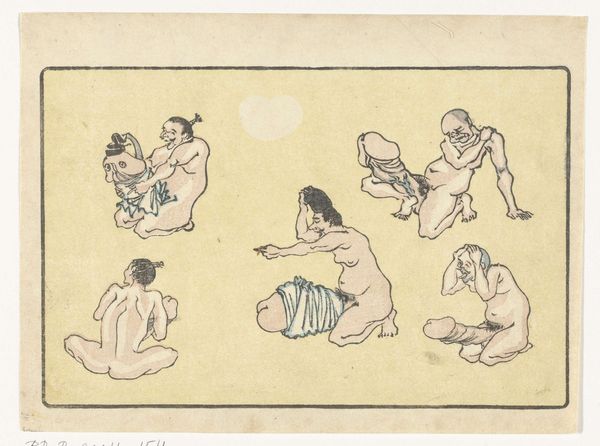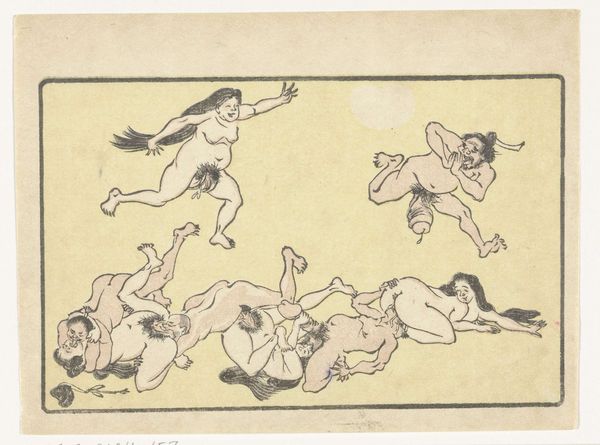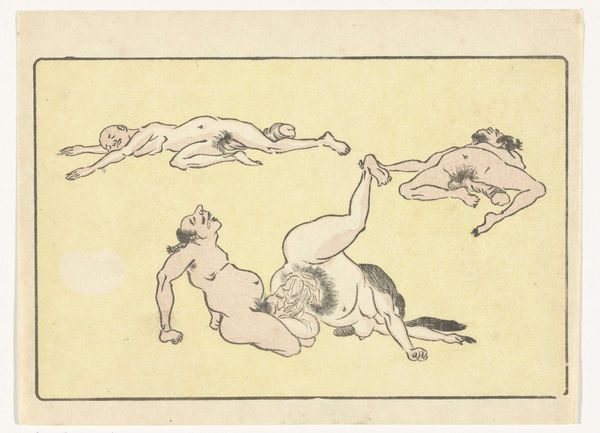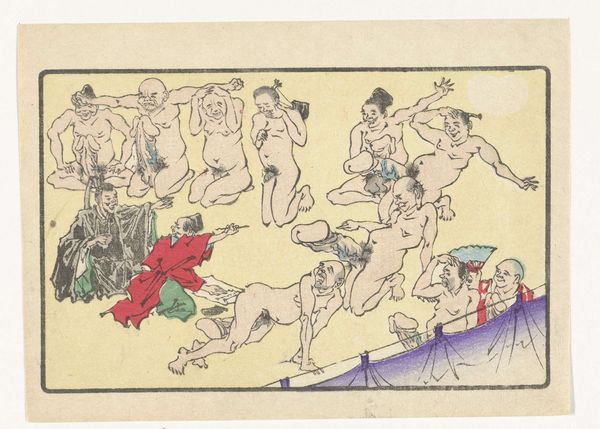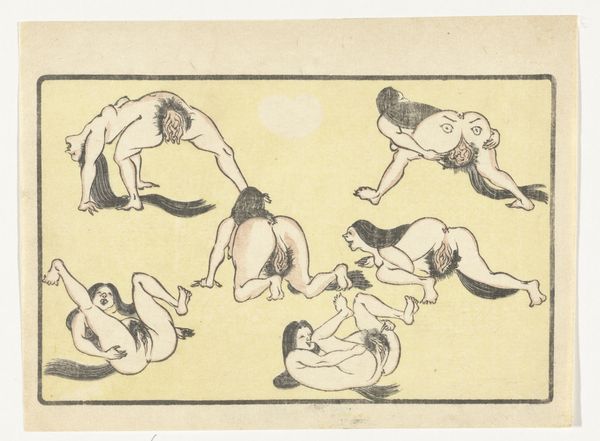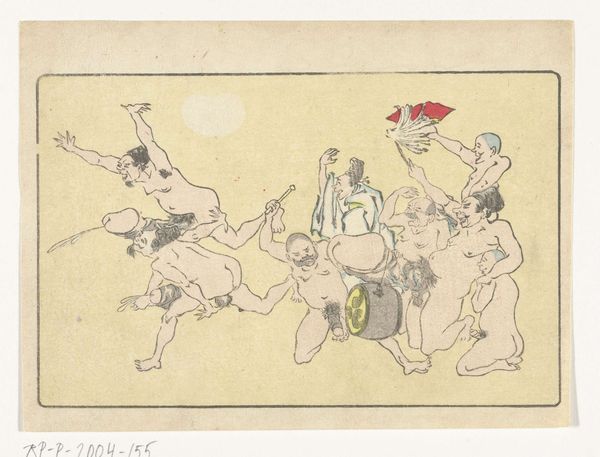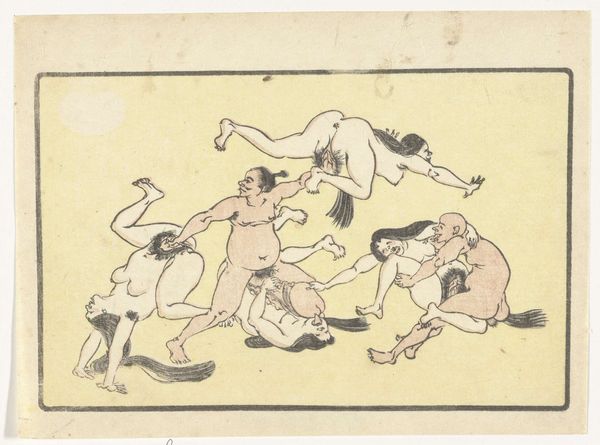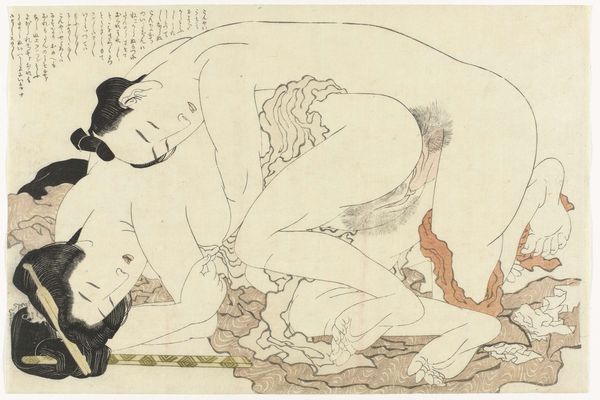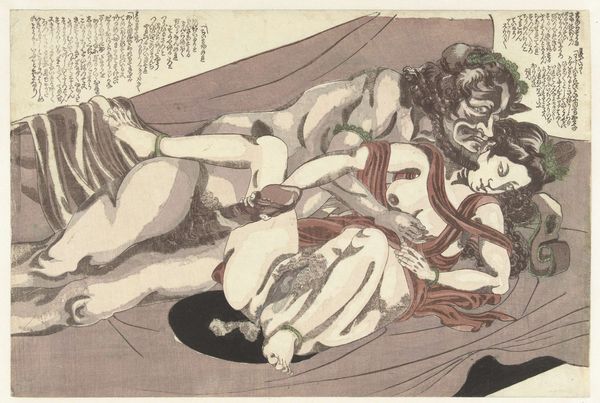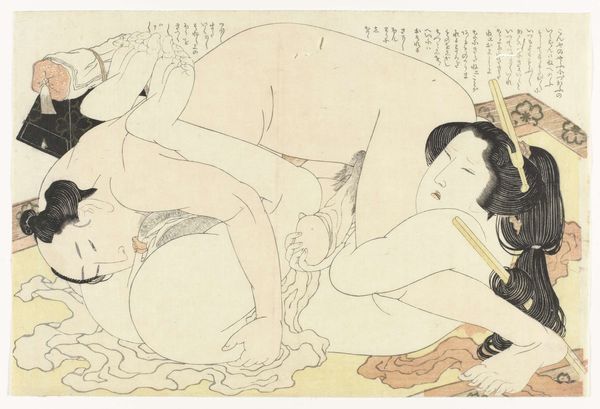
Dimensions: height 130 mm, width 176 mm
Copyright: Rijks Museum: Open Domain
This print was made by Kawanabe Kyōsai in 19th-century Japan, using traditional woodblock printing methods. These processes involve carving an image into a block of wood, inking the surface, and then pressing paper against it to transfer the design. The choice of wood as a matrix gives the print a distinctive visual quality. You see this in the clean lines and flat planes of color. The registration of these blocks – in other words, the precise alignment of each color layer – requires immense skill, with each block carefully carved and aligned to build up the final image. The paper, too, contributes its own texture and tone, affecting the way the inks are absorbed and perceived. Woodblock printing was a commercial enterprise, involving designers, carvers, printers and publishers. Its reliance on human labor made it inherently different from industrialized image production, and reflects the values of craft. Understanding the processes and materials used is essential, reminding us that art is always the product of skill, labor, and cultural context.
Comments
No comments
Be the first to comment and join the conversation on the ultimate creative platform.
